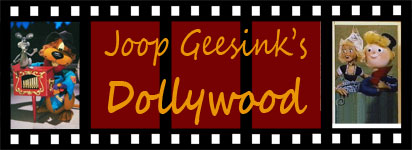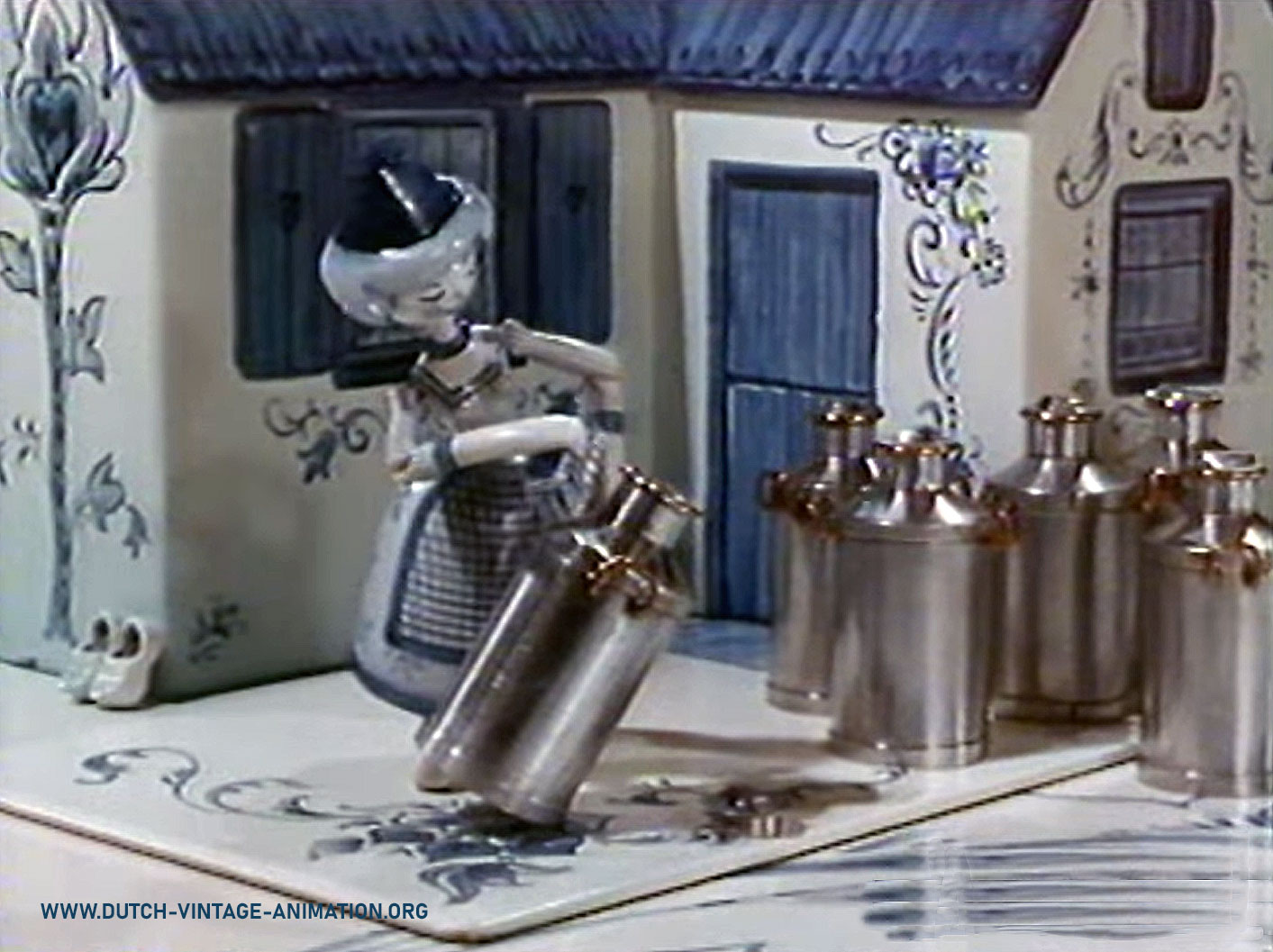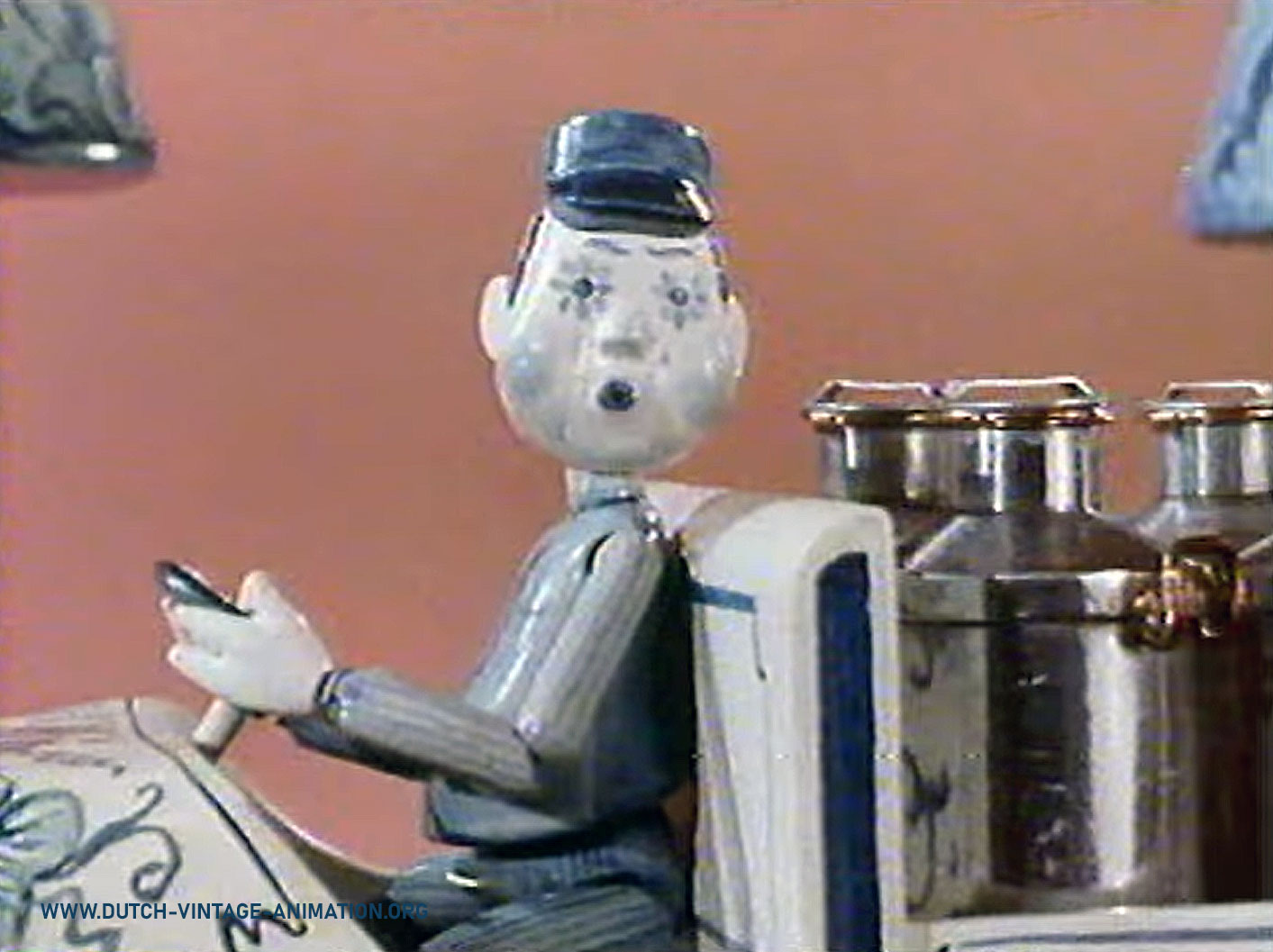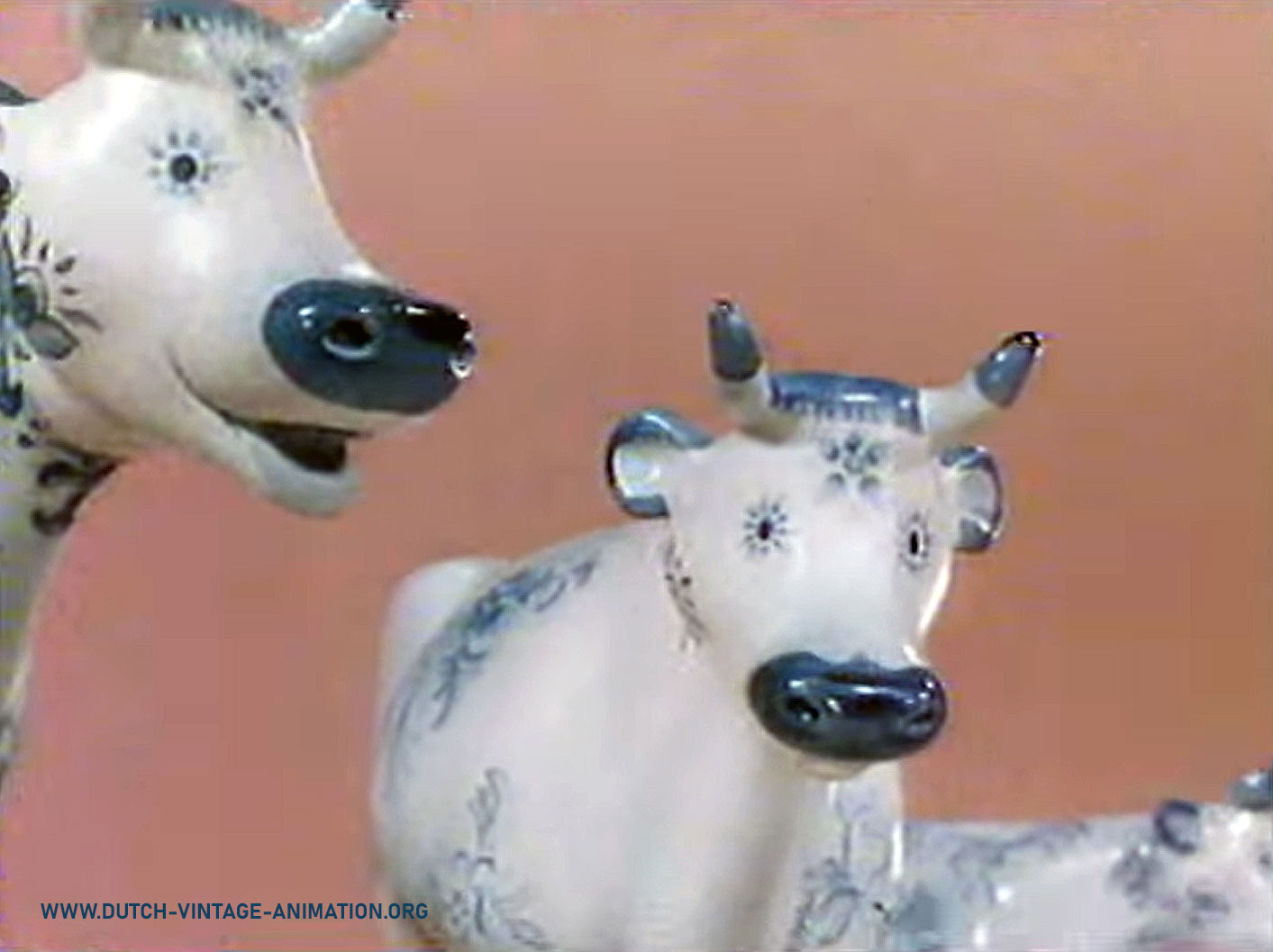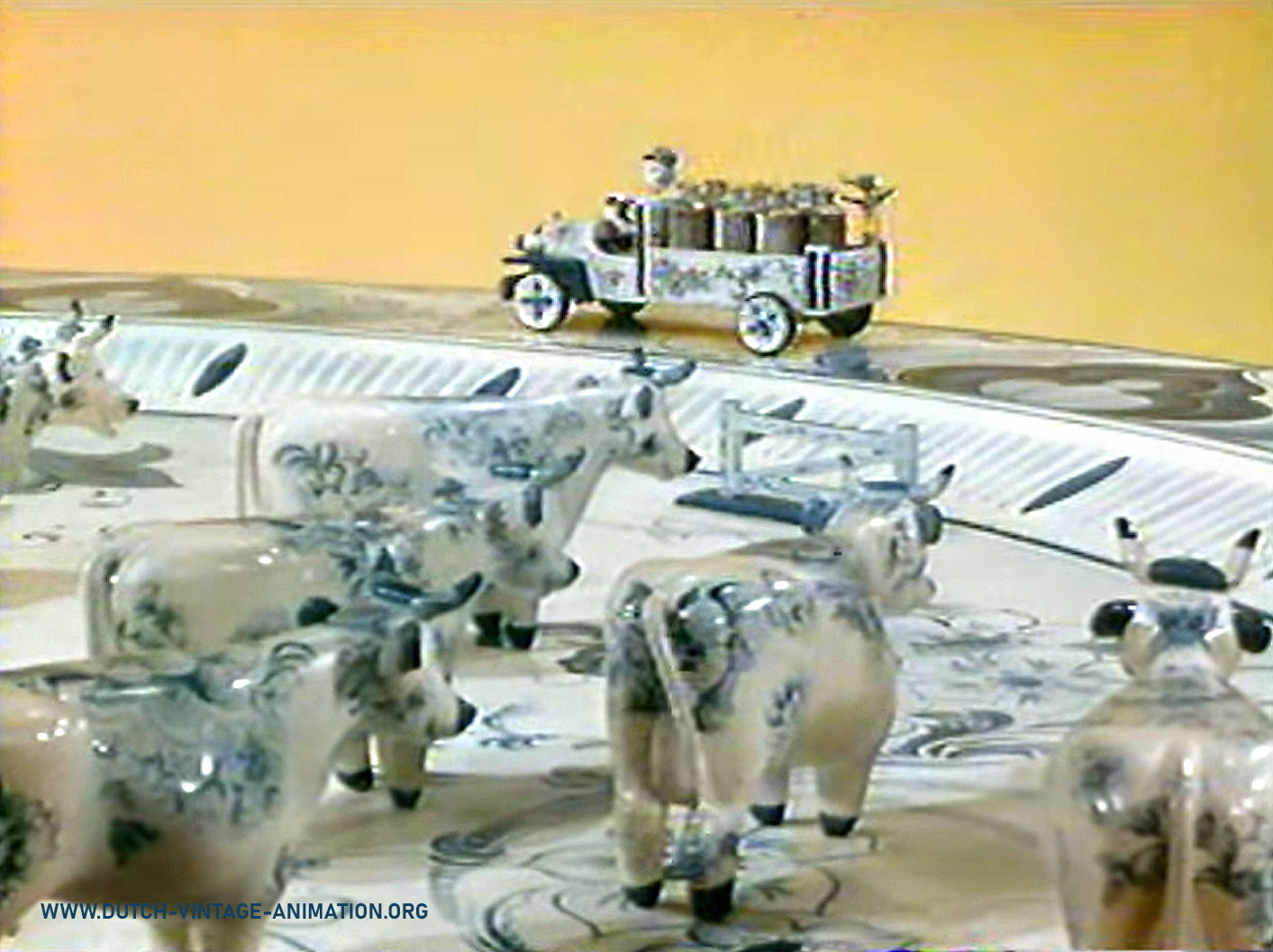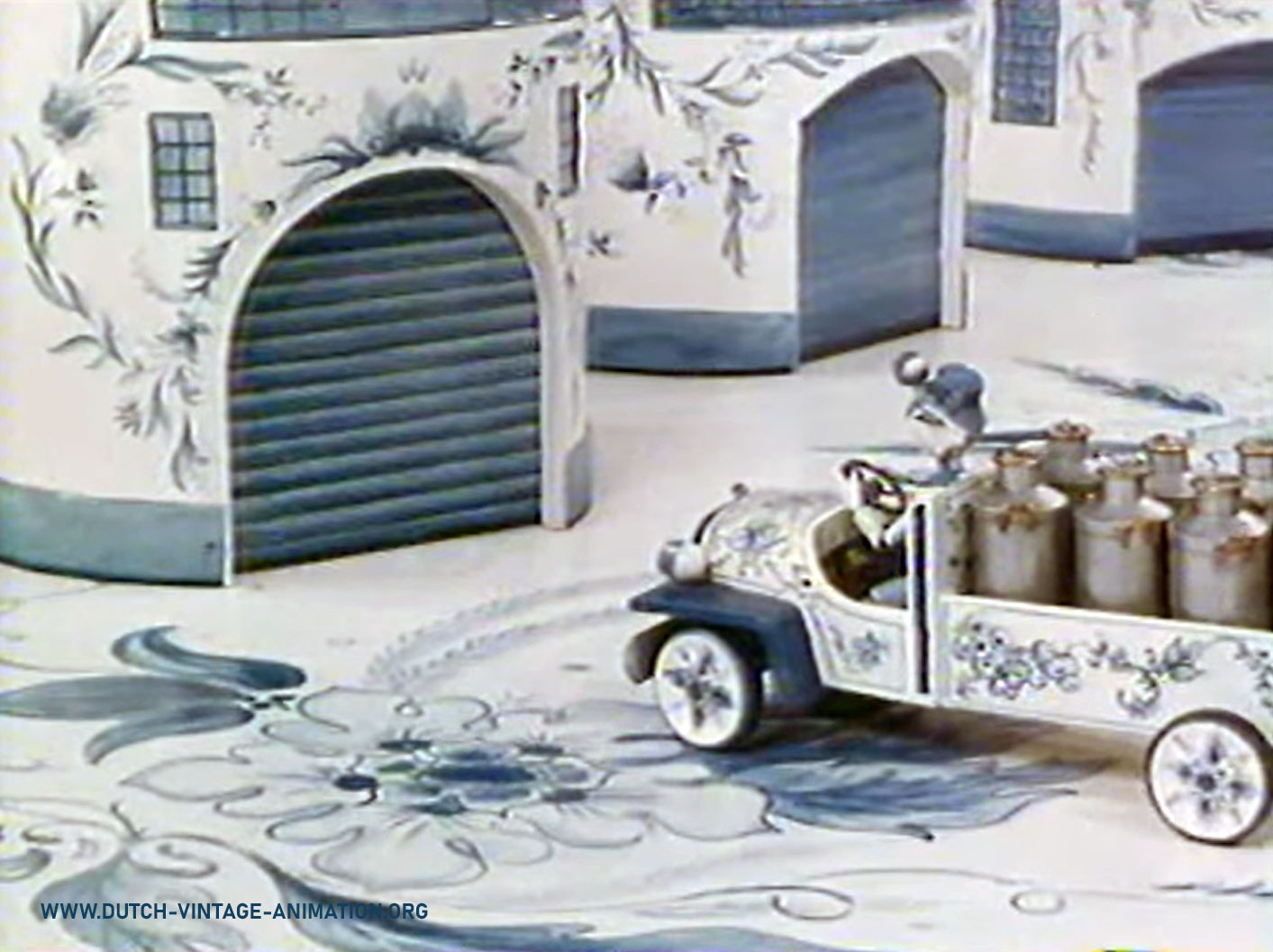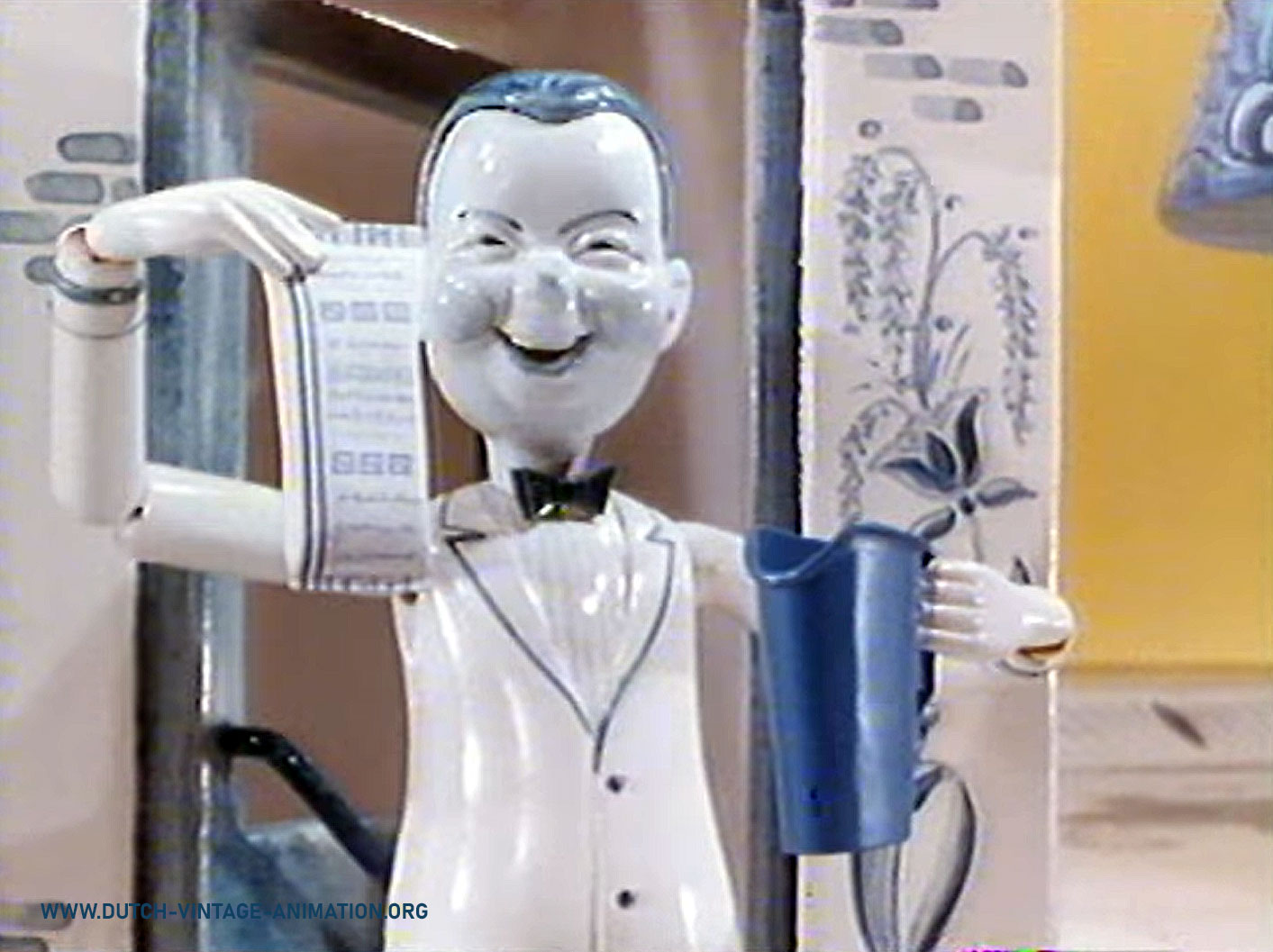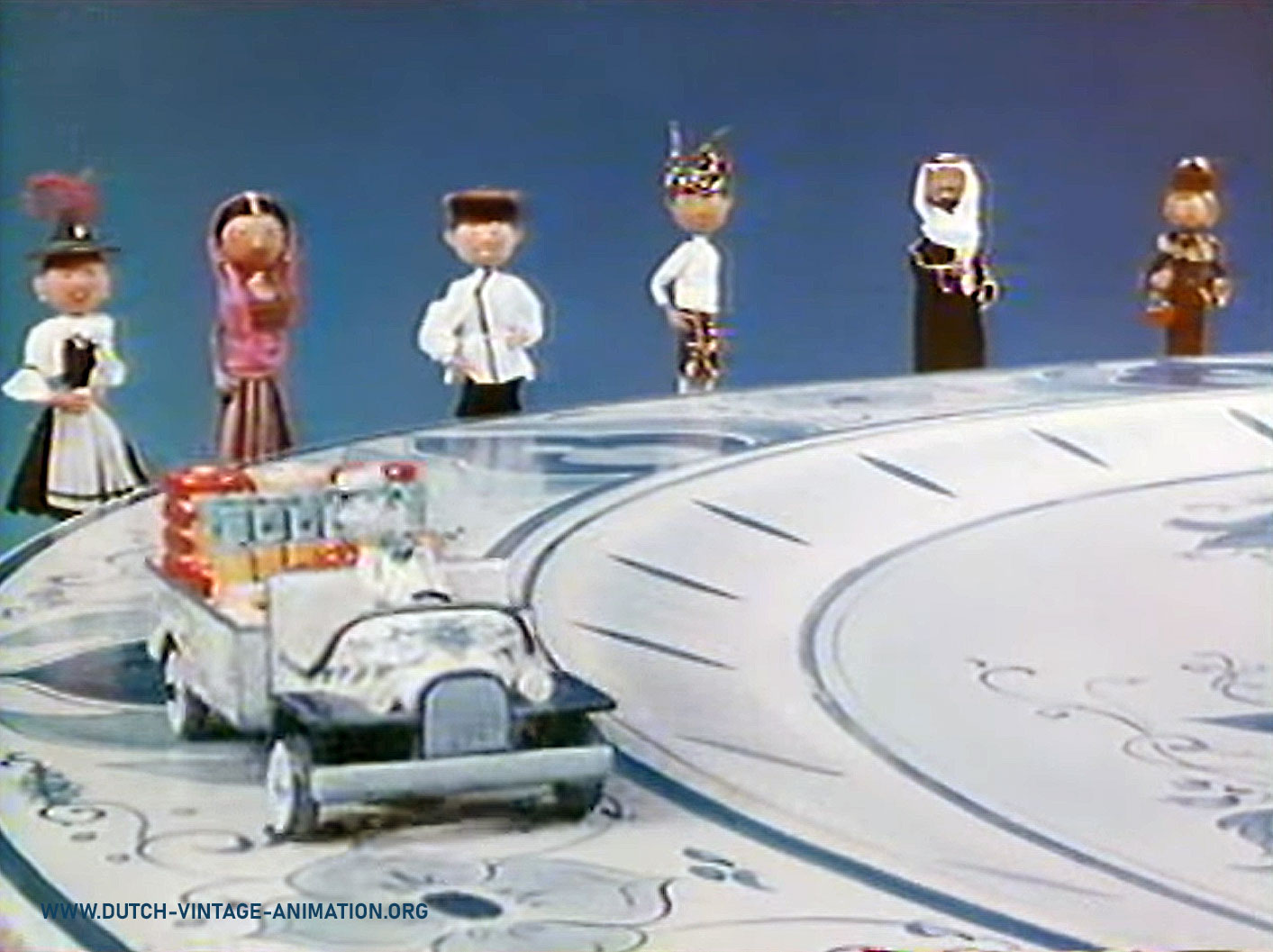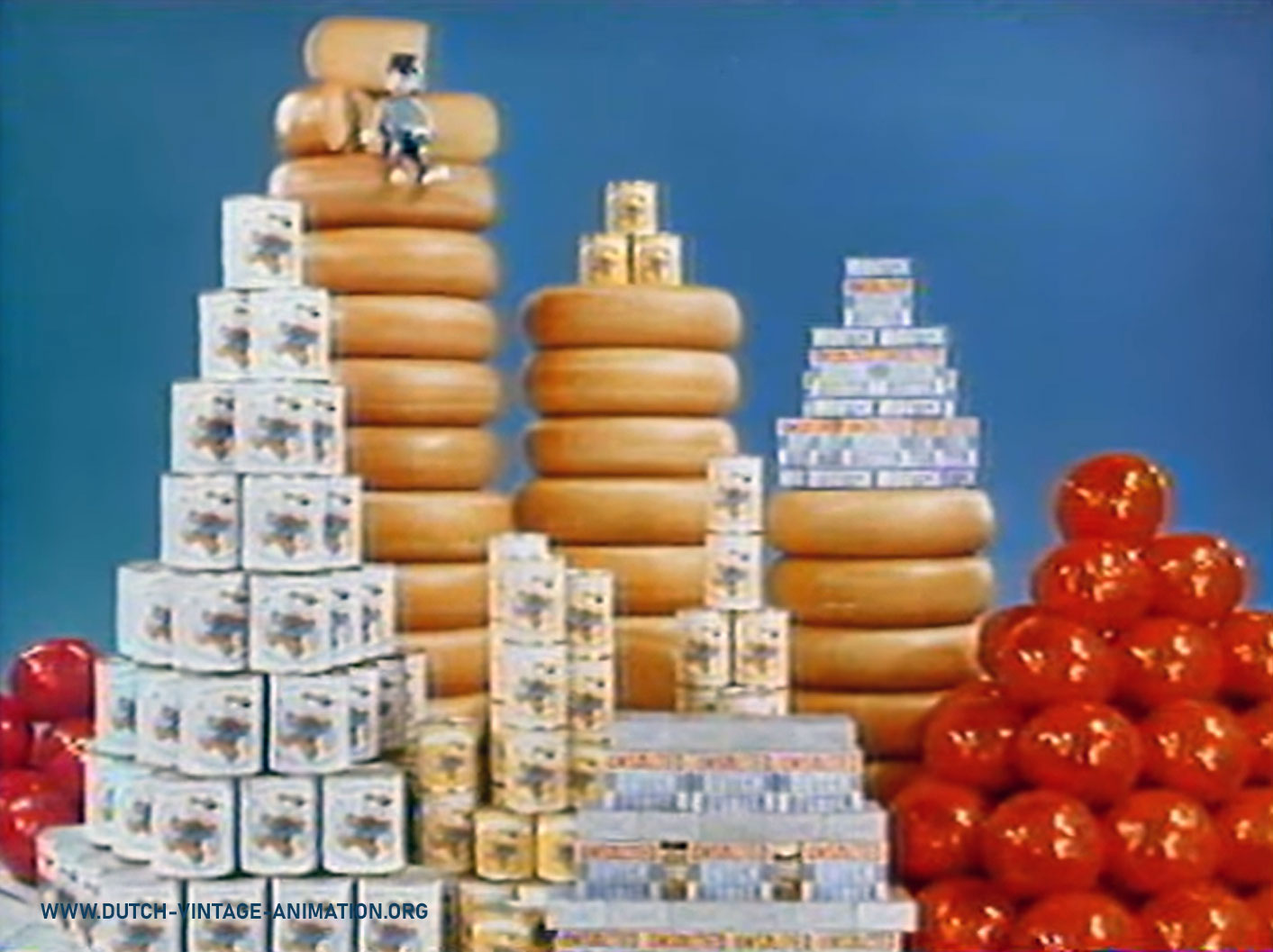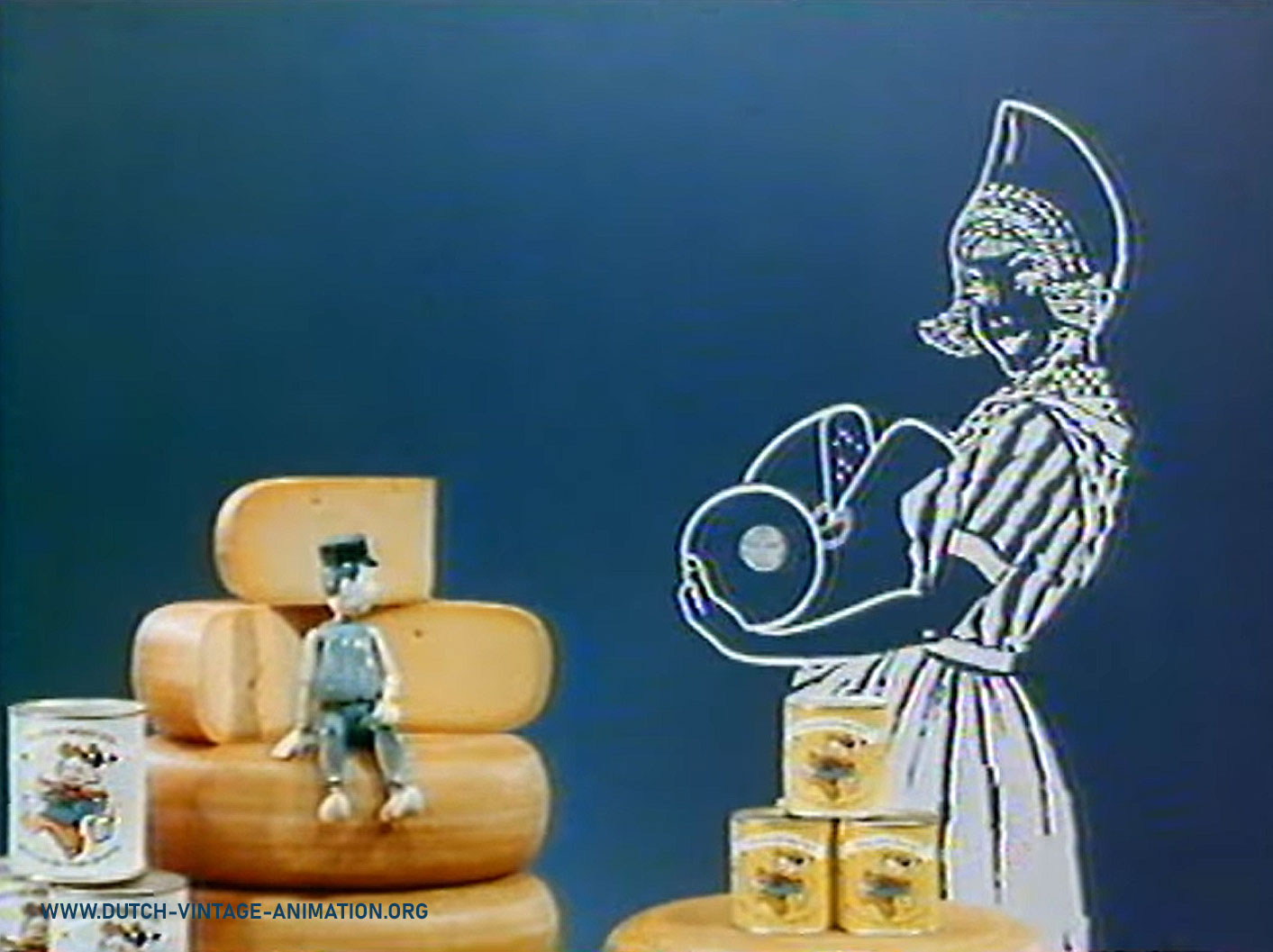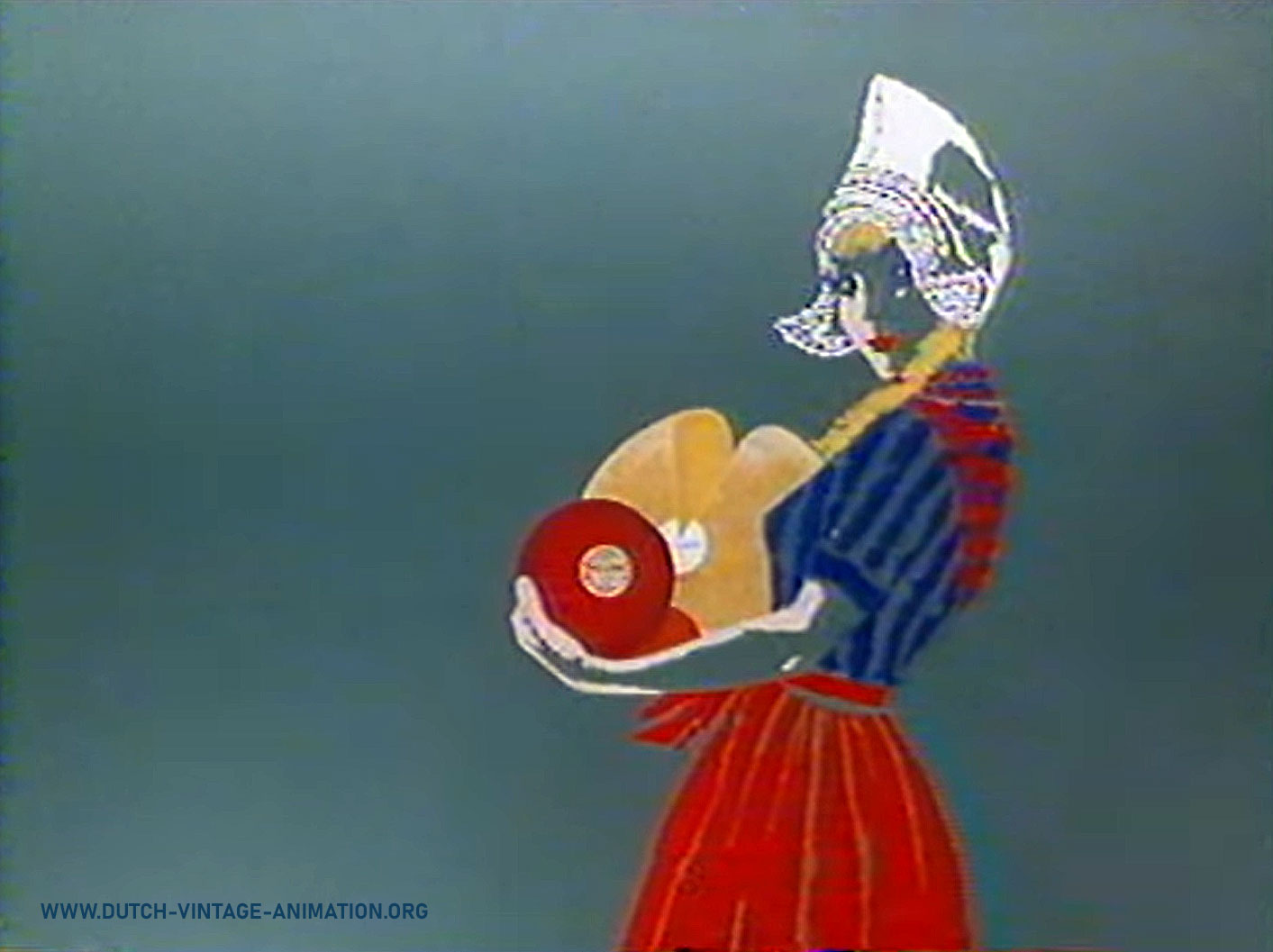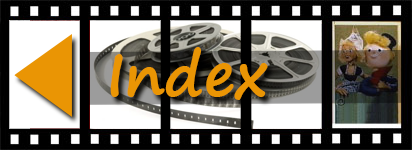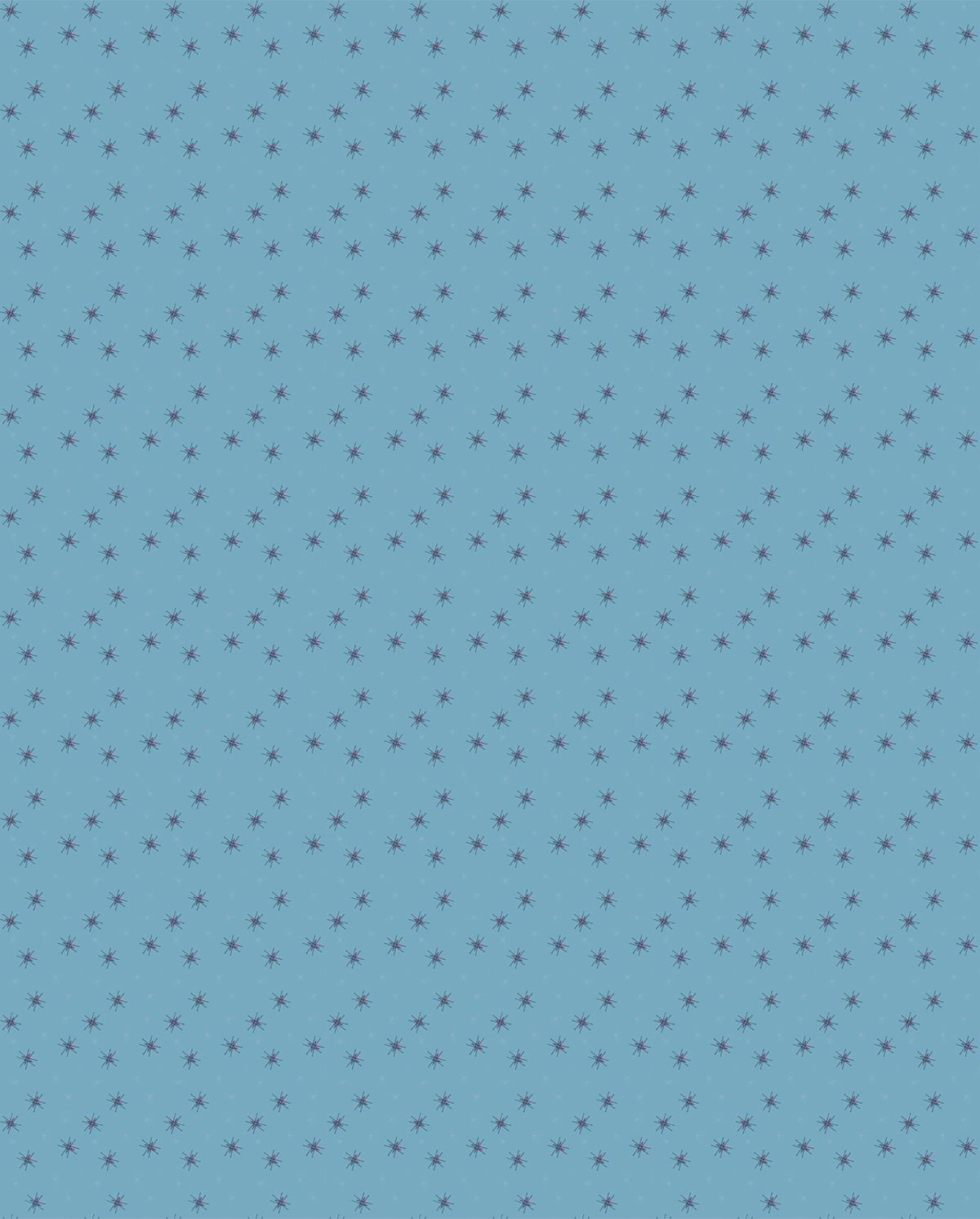
Delft Blue
The film Delft Blue opens with a live action shot. After the atmospheric images with Dutch farming scenery, the camera zooms in on a Delft blue plate to reveal a Dutch animated décor. In the end, everyone in the film is into Dutch dairy products.
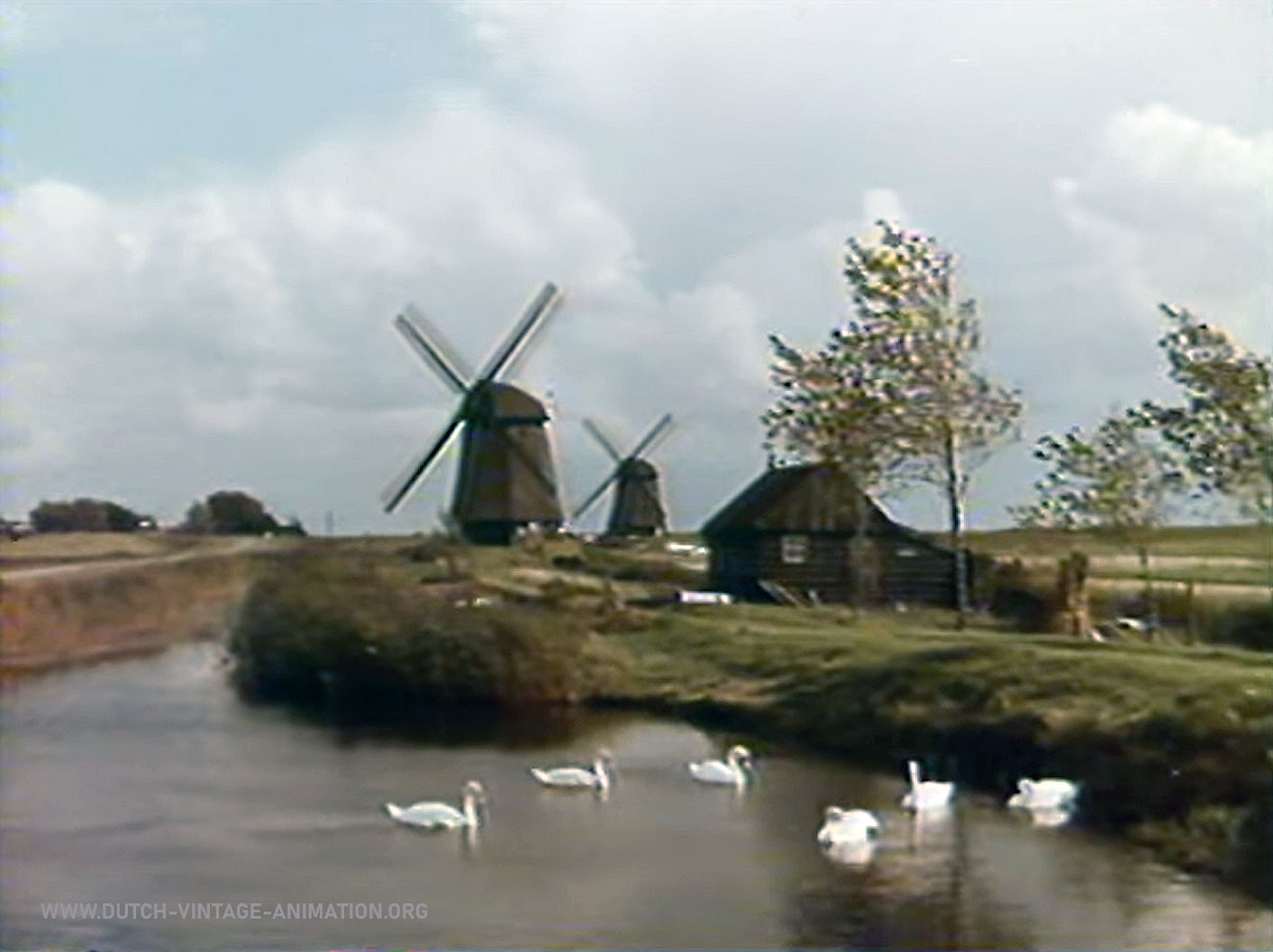
Trivia
The client, the Dutch Dairy Agency, had been successful for years with the Dutchy film concept: "A Dream Comes True" (1955), "Holland Invites The World" (1957) , "Band Stand" and many others.
"Delft Blue" (1966), however, is an entirely different style. The explanation may be sought in the changed market approach of the client.
The logo of the farmer Dutchy was in later promotion more and more replaced by an image of a woman. She is wearing the traditional costume of the fishing village of Volendam.This village has nothing to do with cheese or dairy production, but this colourful costume is well known to tourists. Many people consider this costume to be the definitive Dutch costume.
The logo with the woman at the end of the film became known in Germany as Frau Antje. She turned out to be a very good marketing success. Dutchy was pushed into the background and finally disappeared.
From supporting role to leading role
The idea for Frau Antje as a mascot for the Dutch Dairy Bureau is said to have come from an employee of that Bureau. Anyone who sees the first Dutchy films will notice that the wife of this farmer already appeared. She is dressed ... in Volendam costume. So we can say that Frau Antje already appeared in the media in 1957, but here she only had a supporting role.
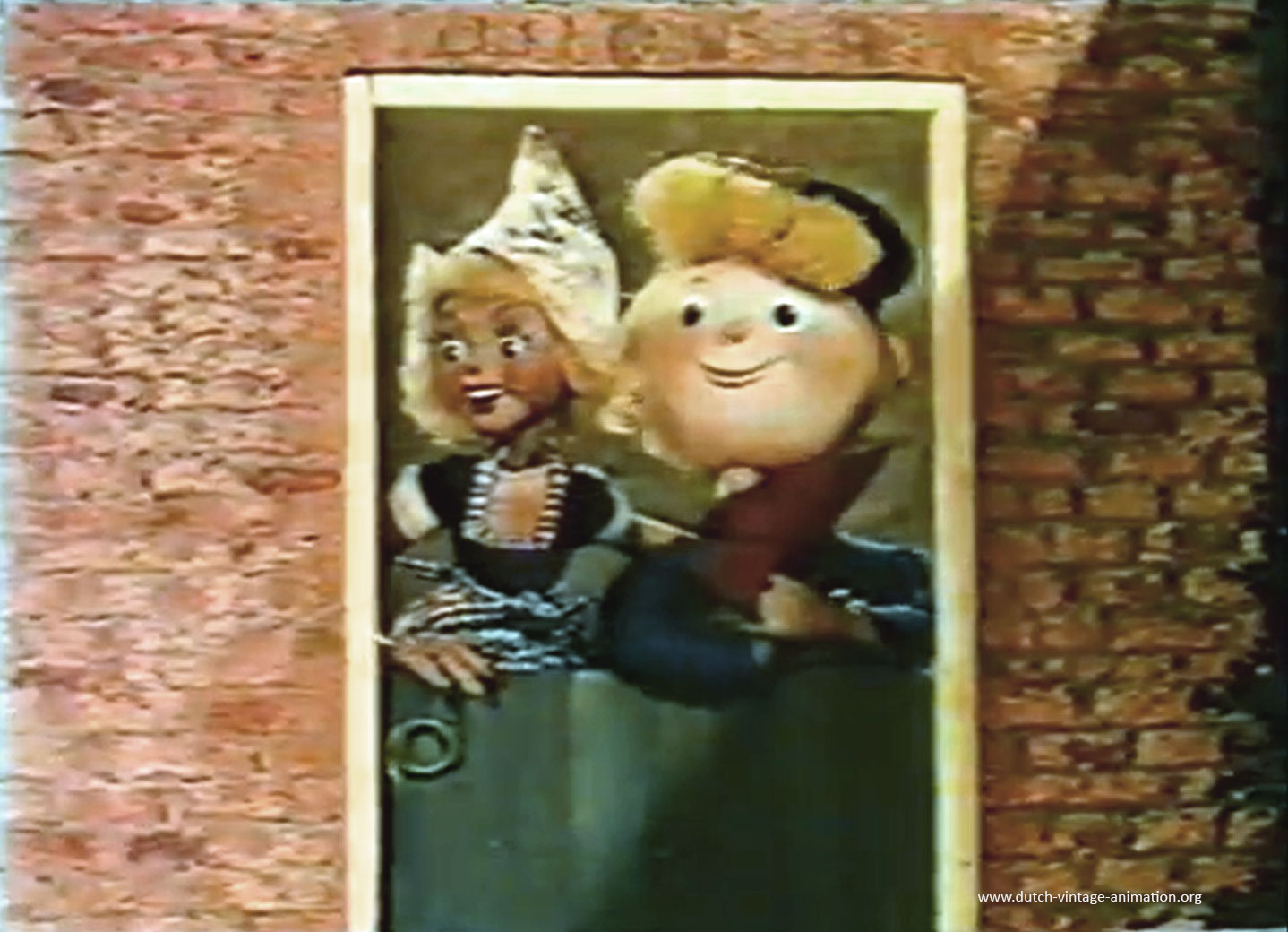
Farmer Dutchy and his wife, Frau Antje. (Holland Invites The World (1957) - This happy couple is also featured in the logo of this website.
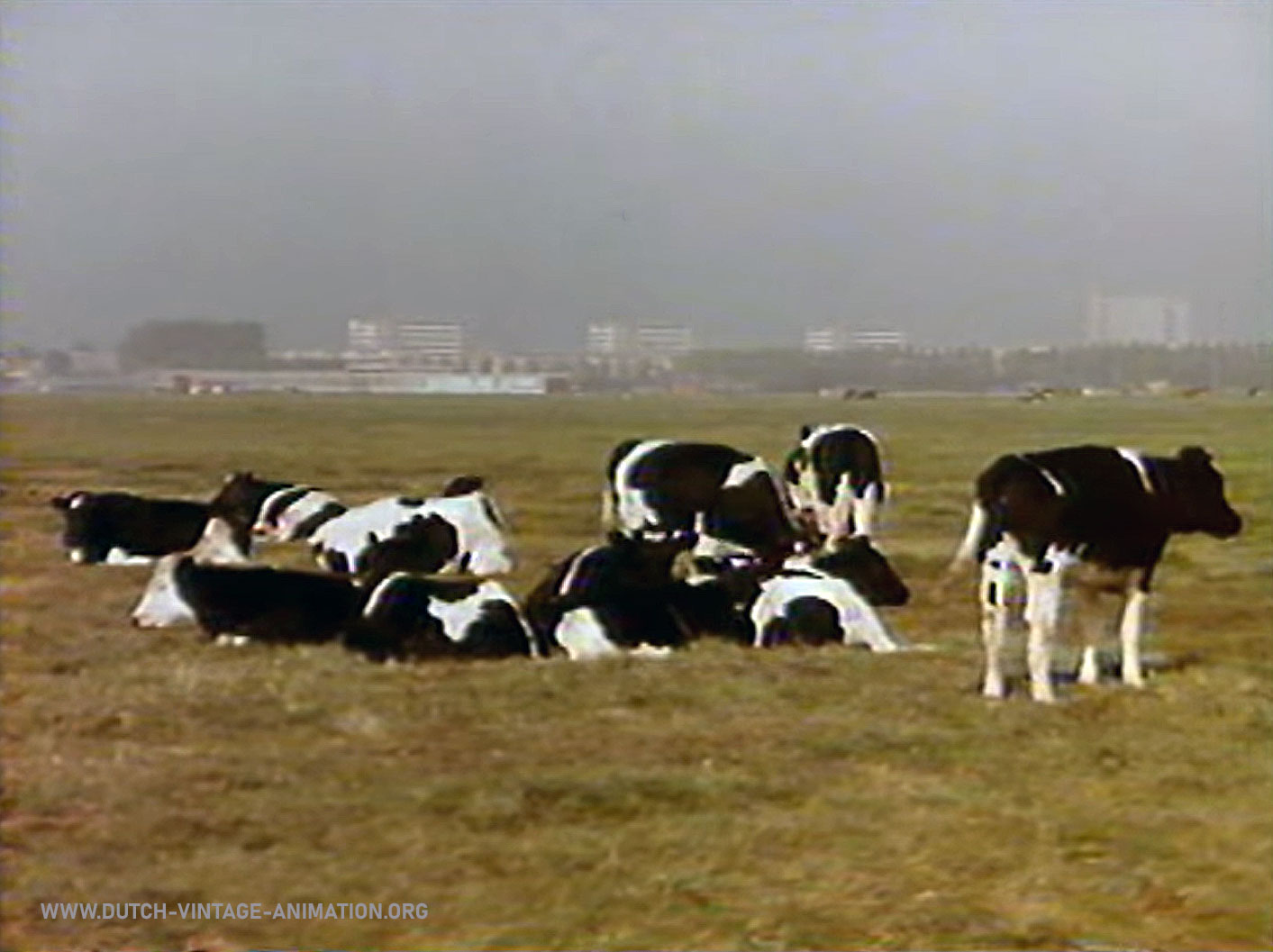
Once more ...
The mascot Dutchy is seen one more time in Delft Blue.
Pay close attention to the end shot, where a tower of cheese, milk bottles are shown ... and cans of condensed milk, on which Dutchy is depicted on the label.
Where Dutchy was promoting condensed milk and milk powder, now Dutchy is promoting traditional dairy products. The promotion of cheese (Gouda cheese) and dairy products received increasing attention from the 1960s onwards.
Advantages
The makers opted to combine 'Dutch dairy products' with traditional Delft blue pottery, in which stereotypical scenes of the Netherlands are depicted. The film music was also inspired by old Dutch traditional songs.
This puppet film style was refreshing thanks to the stylised puppets and simpler sets. An additional advantage was that these puppets were considerably cheaper to produce than the traditional puppet film technique (and sets) used in the classic 'Dutchy films'. Finally, this film was shot on the modern colour negative of Eastman Color (known to many as Kodachrome). This material was cheaper than the technically very laborious Technicolor process.
Modern approach
The film shows that the client had apparently expressed the desire for a more modern approach to the concept of milk, butter and cheese: a shot of cows with flats in the background already gives a suggestion. Whereas Dutchy still milked cows manually, a milking machine is used here. The milk factory is active and a dairy merchant shows the 'new' invention of pre-packed milk in plastic bags.
The title lists Pieter Merkx as (animation) cameraman. Later, he became a full-fledged animator.
Credits
| Tile: | Delft Blue | |
|---|---|---|
| Cliënt: | Dutch Dairy Agency | |
| Year of Production: | 1966 | |
| Duration: | 7,5 minutes | |
| Art Director: | Henk Kabos | |
| Composer: | Ger van Leeuwen | |
| Animator: | Günter Mandle | |
| Animation camera: | Pieter Merkx | |
| Live camera: | Jan Huisman,Ko Steenhorst, Henk Haselaar | |
| Format: | 35 mm, Eastmancolor |
